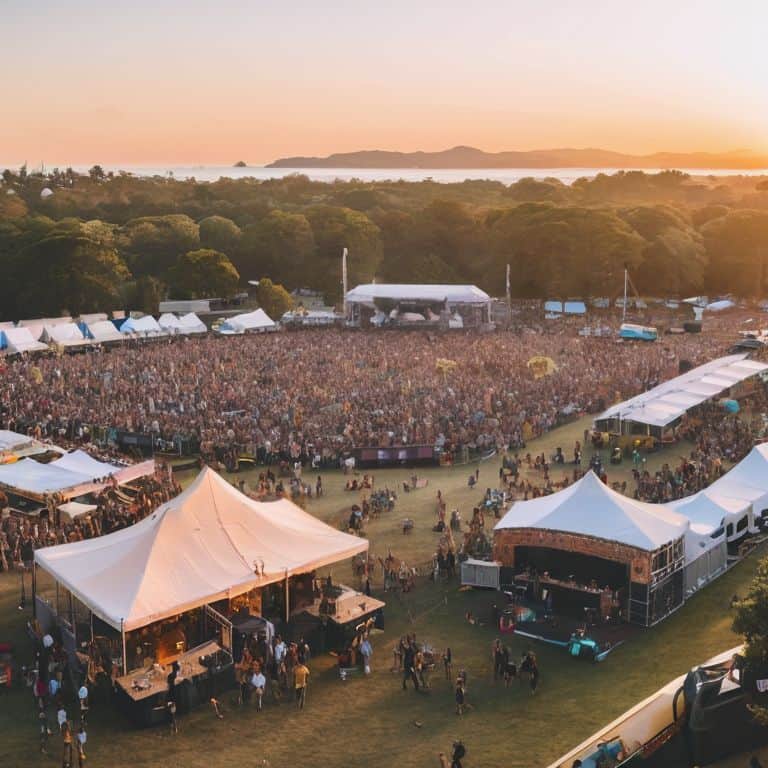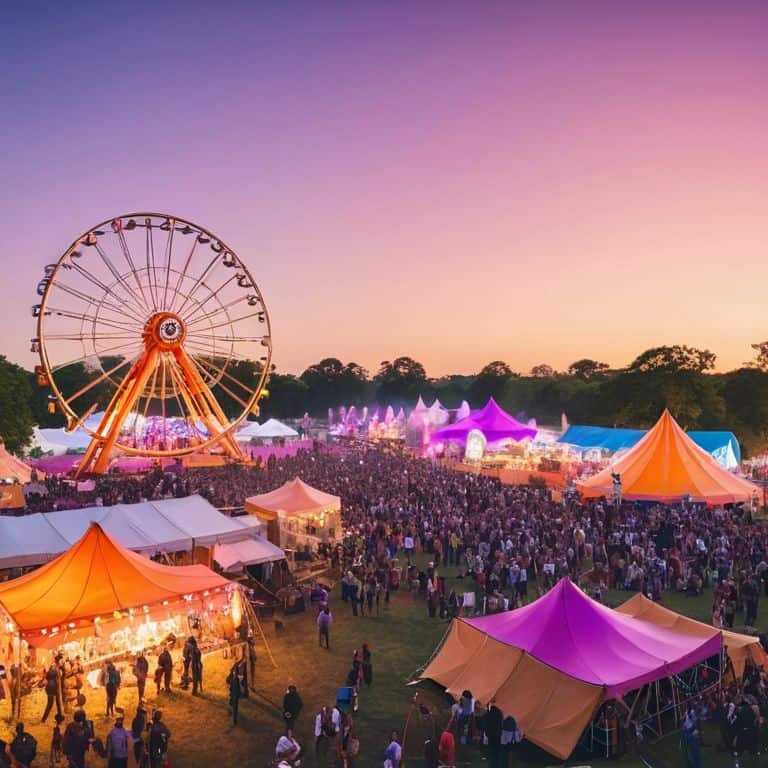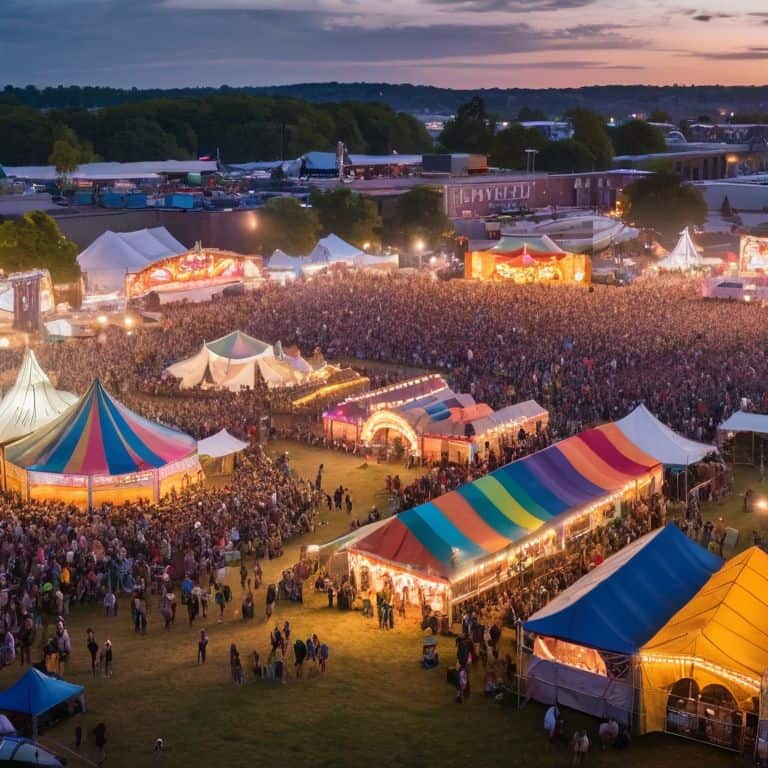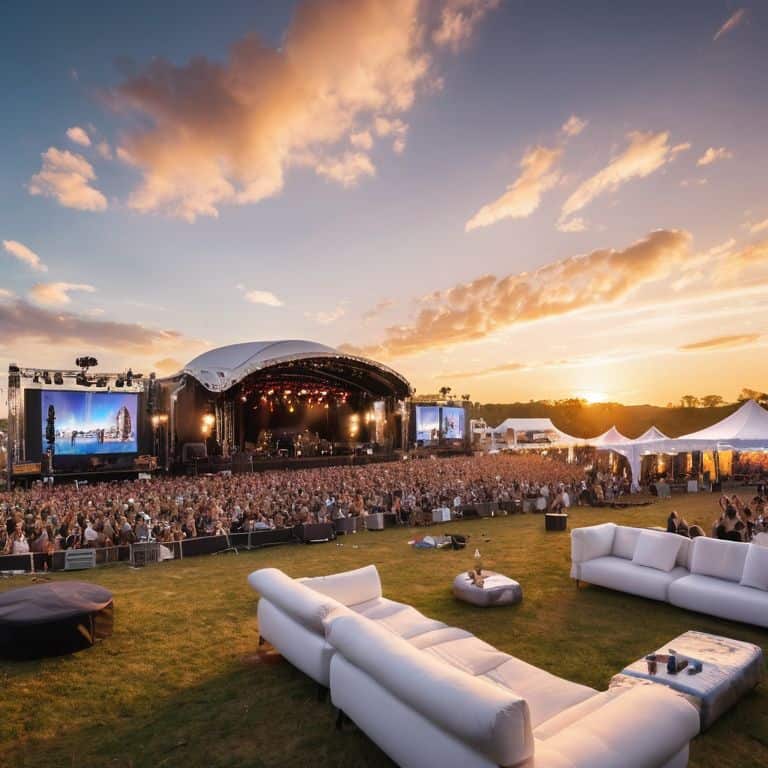I still remember the smell of damp earth and patchouli at my first music festival, a grunge-era extravaganza that felt like a rebellion against the mainstream. The evolution of the music festival has been a wild ride, from its humble, countercultural beginnings to the slick, commercialized events we see today. But let’s be real, the narrative surrounding the evolution of the music festival often gets bogged down in nostalgic platitudes or superficial analysis. I’m more interested in exploring what this transformation says about our collective psyche – how it reflects our deepest desires for community, self-expression, and escape.
As someone who’s been on the ground, documenting the shift from DIY ethos to big-budget productions, I promise to cut through the hype and offer a no-nonsense look at the cultural significance of music festivals. In this article, I’ll delve into the ways in which these events have become a mirror of our society, revealing our anxieties, aspirations, and contradictions. I’ll share personal anecdotes, historical context, and critical insights to provide a nuanced understanding of the evolution of the music festival. My goal is to inspire a more thoughtful conversation about the role of music festivals in our lives, one that goes beyond the surface level and explores the complexities of our shared cultural experience.
Table of Contents
Riffing on Chaos

As I delve into the history of music festivals, I’m struck by the seismic shifts in their cultural significance. What was once a countercultural phenomenon has morphed into a mainstream spectacle, with festival experience design playing a crucial role in shaping the attendee’s encounter. The likes of Coachella and Lollapalooza have become bastions of commercialized entertainment, where the music often takes a backseat to the overall aesthetic experience.
The impact of commercialization on music festivals is a double-edged sword. On one hand, it has enabled these events to reach a broader audience, providing a platform for artists to showcase their talent. On the other hand, it has led to a sense of homogenization, with many festivals beginning to feel like carbon copies of one another. The emphasis on music festival sustainability has also become a pressing concern, as the environmental footprint of these events continues to grow.
As someone who cut their teeth in the 90s indie scene, I’m often left feeling melancholic about the state of modern music festivals. The raw, unbridled energy of those early events has given way to a more polished, corporate sheen. And yet, despite these changes, music festivals remain a vital part of our collective cultural landscape, offering a unique window into the music festival cultural significance of our times.
Decoding the History of Music Festivals
As I delve into the history of music festivals, I find myself drawn to the cultural significance of these events. From the iconic Woodstock to the modern-day Coachella, music festivals have served as a reflection of the societal values and anxieties of their time.
The evolution of music festivals can be seen as a microcosm of our collective psyche, with each era’s festivals embodying the unique spirit and concerns of its generation.
Tuning Into Music Festival Trends
As I delve into the world of music festivals, I find myself tuning into the subtle shifts in crowd dynamics, from the emergence of new genres to the resurgence of old ones. The festivals of today are a far cry from their humble beginnings, with many now boasting elaborate stage designs and big-name headliners.
The commercialization of music festivals has led to a more polished, yet somewhat sanitized, experience. Despite this, the essence of these events remains intact – a testament to the power of music to bring people together and create a sense of community.
The Evolution of the Music Festival

As I delve into the history of music festivals, I’m struck by the sheer diversity of experiences that have unfolded over the years. From the iconic Woodstock to the modern-day Coachella, each event has reflected the cultural and social zeitgeist of its time. The music festival has become an integral part of our collective cultural landscape, offering a unique space for self-expression and community building.
The festival experience design has also undergone a significant transformation, with organizers now focusing on creating immersive and interactive environments that cater to a wide range of tastes and preferences. This shift has been driven, in part, by the growing awareness of music festival sustainability, as event planners strive to minimize their ecological footprint while still delivering an unforgettable experience for attendees.
As I reflect on the impact of commercialization on music festivals, I’m reminded that the lines between art and commerce have become increasingly blurred. While some may lament the loss of the DIY ethos that once defined the music festival scene, others see the commercialization of these events as a necessary evil, allowing them to reach a wider audience and showcase a broader range of talent. Ultimately, the cultural significance of music festivals lies in their ability to bring people together, foster creativity, and provide a platform for artistic expression.
Designing the Festival Experience
As I delve into the world of music festivals, I’m struck by the importance of immersive experiences. The way a festival is designed can make or break the atmosphere, transforming a mere concert into a vibrant community. From the layout of the stages to the variety of food and drink options, every detail contributes to the overall ambiance.
The most successful festivals are those that prioritize creative freedom, allowing attendees to express themselves and connect with the music on a deeper level. Whether it’s through interactive art installations or spontaneous performances, the goal is to craft an environment that fosters a sense of belonging and shared excitement.
Sustainability vs Commercialization
As I reflect on the modern music festival landscape, I’m struck by the inherent tension between sustainability and the bottom line. It’s a delicate balance that few festivals manage to strike, often prioritizing commercial appeal over environmental concerns. The consequence is a sea of single-use plastics, fossil fuel-guzzling productions, and a general disregard for the ecological footprint of these events.
The shift towards green initiatives is a step in the right direction, but it’s often overshadowed by the sheer scale of commercialization. I’ve seen festivals partner with eco-friendly brands, only to be sponsored by polluters in the same breath. It’s a contradictory approach that undermines the very message of sustainability they’re trying to convey.
5 Riffs to Understand the Evolution of Music Festivals
- Embrace the Chaos: Recognize that music festivals are a reflection of our collective psyche, with their evolution mirroring societal shifts and cultural trends
- Dig into the Archives: Study the history of music festivals, from their humble beginnings to their current commercialized forms, to understand the intricacies of their transformation
- Tune into the Trends: Keep an ear to the ground for emerging trends in music festival culture, such as the rise of eco-friendly festivals and the incorporation of immersive art experiences
- Question the Sponsors: Consider the role of commercialization in shaping the music festival experience, and how this impacts the artistic integrity and community spirit of these events
- Design for the Future: Think critically about what the ideal music festival of the future might look like, taking into account factors such as sustainability, diversity, and the intersection of music, art, and technology
Key Takeaways: Unpacking the Music Festival Phenomenon
Music festivals have transformed from countercultural gatherings to mainstream, commercial events, reflecting a shift in societal values and our collective desire for communal experience
The evolution of music festivals is a microcosm of broader cultural trends, including the tension between sustainability and commercialization, and the impact of technology on live events
By examining the history, trends, and design of music festivals, we can gain insight into the human desire for connection, creativity, and self-expression, and what this reveals about our anxieties, desires, and the state of our culture
Echoes of a Revolution
The music festival, once a rebellious cry against mainstream culture, has evolved into a polished reflection of our society’s contradictions – a vibrant, messy, and mesmerizing spectacle that simultaneously celebrates community and commodifies experience.
Julian Thorne
The Rhythm of Progress

As I reflect on the evolution of music festivals, it’s clear that we’ve witnessed a significant shift from countercultural gatherings to mainstream extravaganzas. From the historic events like Woodstock to the modern-day spectacles like Coachella, the music festival has become a mirror of our collective psyche, revealing our desires, anxieties, and values. We’ve seen the rise of sustainability efforts, the impact of commercialization, and the importance of designing immersive festival experiences. Through it all, music festivals have remained a unique space for self-expression, community building, and cultural exchange.
As we look to the future, it’s essential to recognize that the evolution of music festivals is not just about the music or the events themselves, but about the human connections we make along the way. By embracing the chaos and creativity of these gatherings, we can tap into the transformative power of music and community, and create experiences that inspire, uplift, and challenge us to be our best selves. In the end, the rhythm of progress is not just about the beat of the music, but about the rhythm of our collective heartbeat, pulsing with the energy of creativity, connection, and possibility.
Frequently Asked Questions
How have music festivals managed to maintain their cultural significance despite the shift from grassroots movements to commercialized events?
For me, the key to music festivals’ enduring cultural significance lies in their ability to evolve while retaining a spark of their countercultural essence, reflecting our collective desires for community and creative expression, even as they’ve become big business.
In what ways have music festivals incorporated technology to enhance the overall experience for attendees?
Tech has revolutionized the festival scene, from cashless payment systems to immersive art installations. I’ve seen festivals leverage social media to create interactive experiences, like personalized schedules and real-time updates. Even wristbands have become high-tech, tracking our every move – and preference – to curate a uniquely tailored experience, blurring the lines between convenience and surveillance.
What role do music festivals play in promoting sustainability and social awareness, and how effective have these efforts been in creating lasting impact?
Music festivals have become a platform for promoting sustainability and social awareness, with many events incorporating eco-friendly practices and hosting activist groups. While their impact is sometimes fleeting, festivals like Glastonbury and Coachella have successfully raised awareness and inspired change, showing that even fleeting gatherings can have a lasting influence on our collective consciousness.
